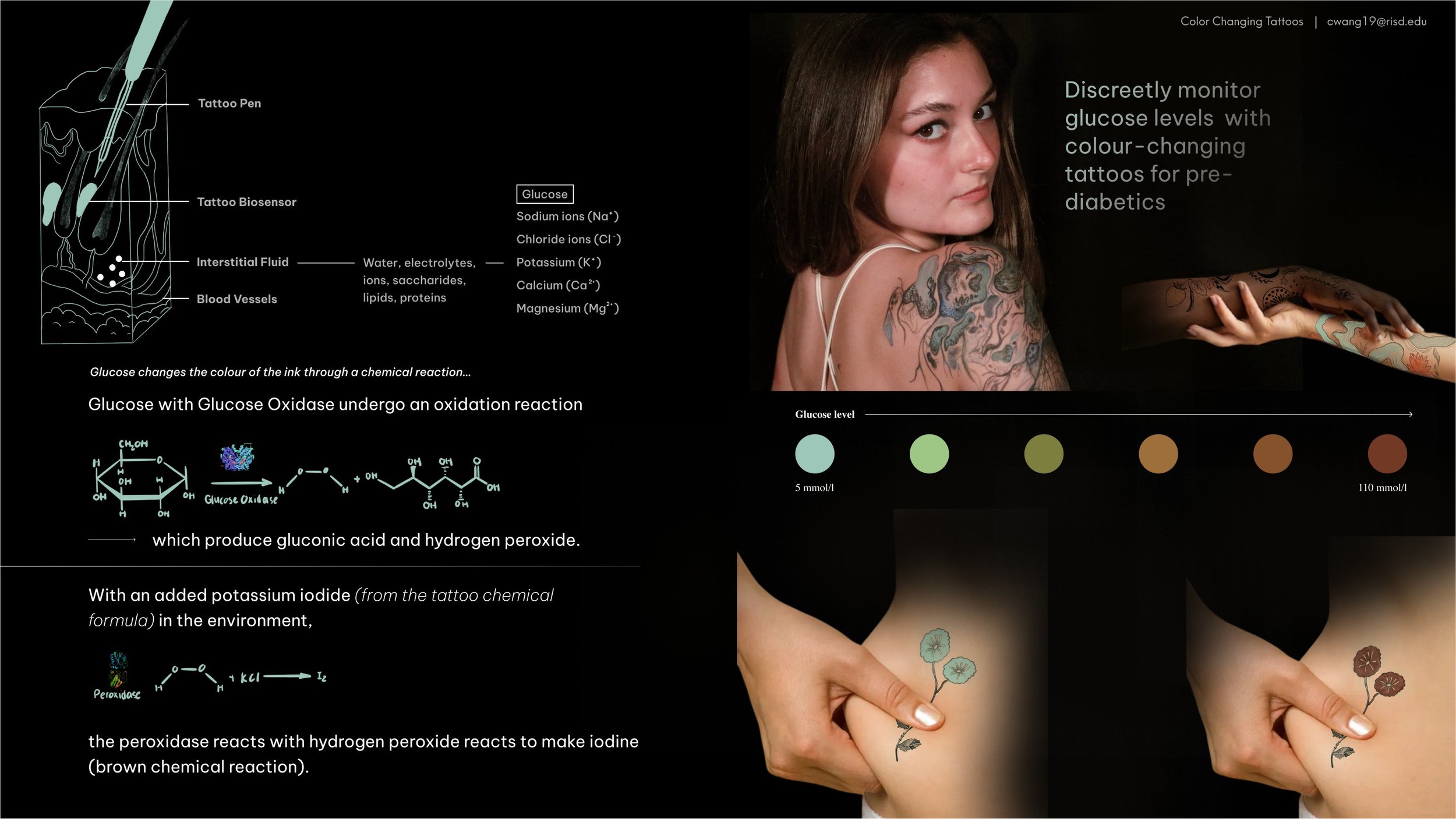Problem: Christina Wang, a student at RISD, recently Tweeted about a project of hers to design biosensor tattoos. These tattoos would change colors based on a variety of factors such as blood glucose levels, pH levels, or sodium levels. For instance the tattoo could change from pink to purple based on glucose levels, thus, the user could monitor the color changes and the need of insulin.
Currently, during daily activities and alimentary habits, diabetics need to monitor their glucose levels by piercing the skin, 3 to 10 times per day. Could a solution like this positively impact the lives of hundreds of healthcare patients?
Subscribe here to get access to the first 500 ideas from our blog. For just one coffee a month, you can have access to more than $500 billion dollars of ideas. What's not to love?
Solution: This business would pioneer a new method of delivery for biosensors through investing in tattoos and ink. While Christina’s idea went viral recently, it certainly was not the first instance of this idea in the media. In June 2017, MIT and Harvard researchers also created color-changing tattoos that could, in the future, track your pH, glucose, and sodium levels. Called DermalAbyss, it replaced typical tattoo ink with biosensors, which respond to changes in the skin’s interstitial fluid that surrounds tissue cells.
They tested the product in an ex vivo pig skin model and were clear about the limitations:
The range of colors and intensities of the current biosensors should be extended to enable higher-resolution information. The optimization of the detection range and the selectivity of the existing biosensors will accelerate their translation to the clinic or market.
The safety profile of these biosensors must also be characterized, beginning first with cytoxicity assays and biocompatibility in vitro before progressing to in vivo animal studies to determine systemic biocompatibility, in terms of toxicity and interference with normal tissue function.
Long-term in vivo researches will be needed for establishing the retention of the biosensors in the skin and to quantify biosensor diffusion in tissue. One potential research direction would be to conjugate the biosensors to polymeric microspheres through acrylate groups to prevent diffusion into tissues.
Some Twitter users identified other challenges. @oceanexplains described:
Some challenges that I think you’ll need to overcome include calibration for variation in skin types, interference from topical solutions, exhaustion of reactants/reaction resetting. It might be better to focus on a novel engineered enzyme with reversible color changing system.
Even with this, if taken to scale the product could be revolutionary.
Monetization: Sales direct to customers or licensing to pharmaceuticals.
Contributed by: Michael Bervell (Billion Dollar Startup Ideas)

